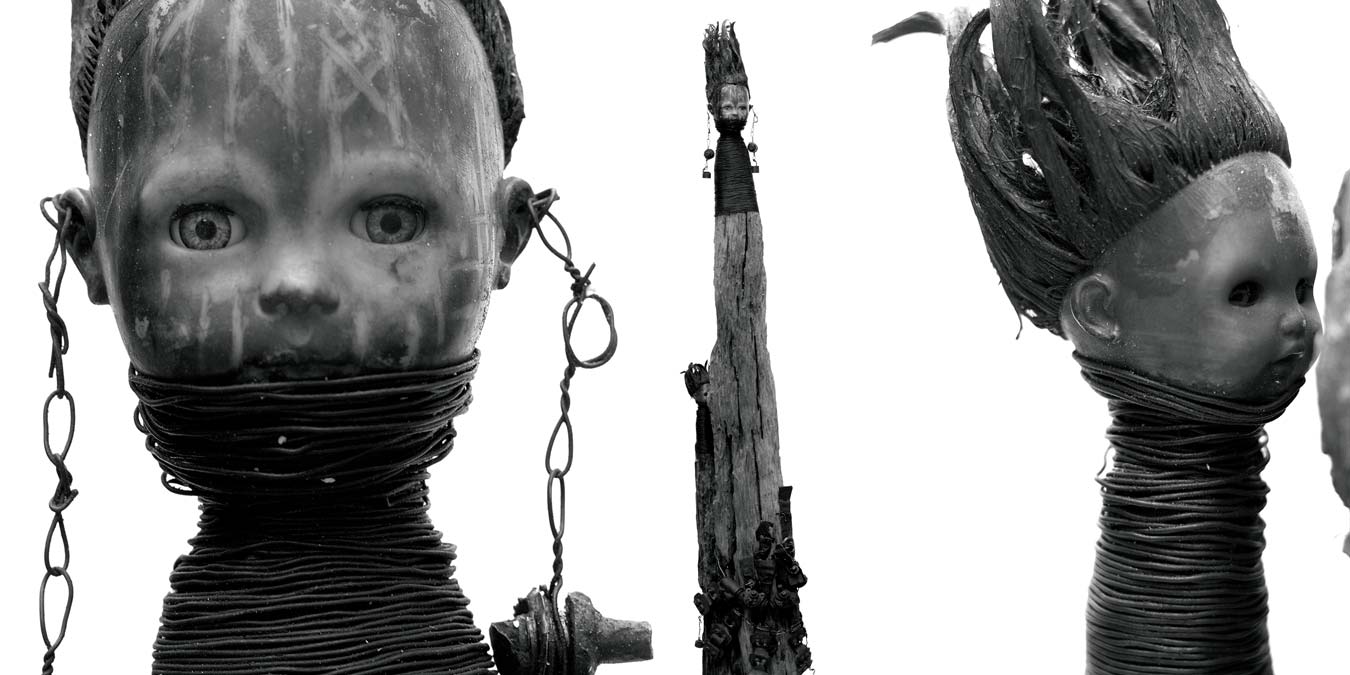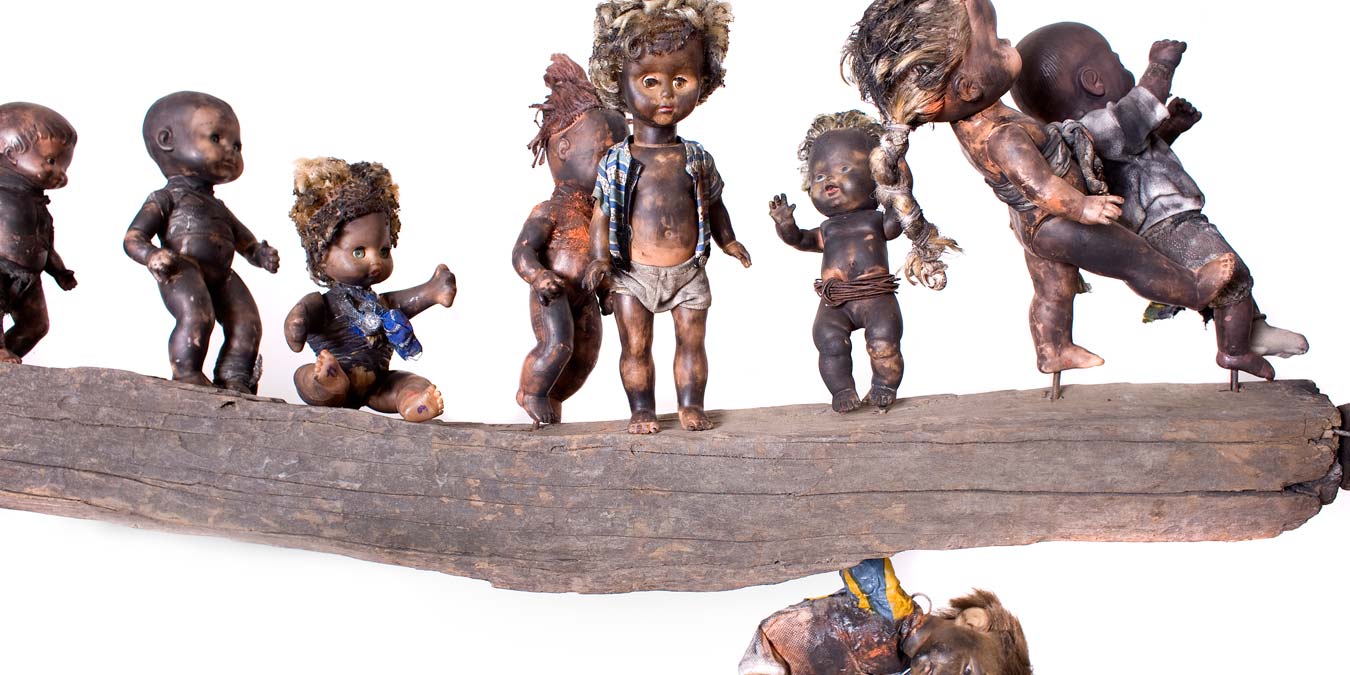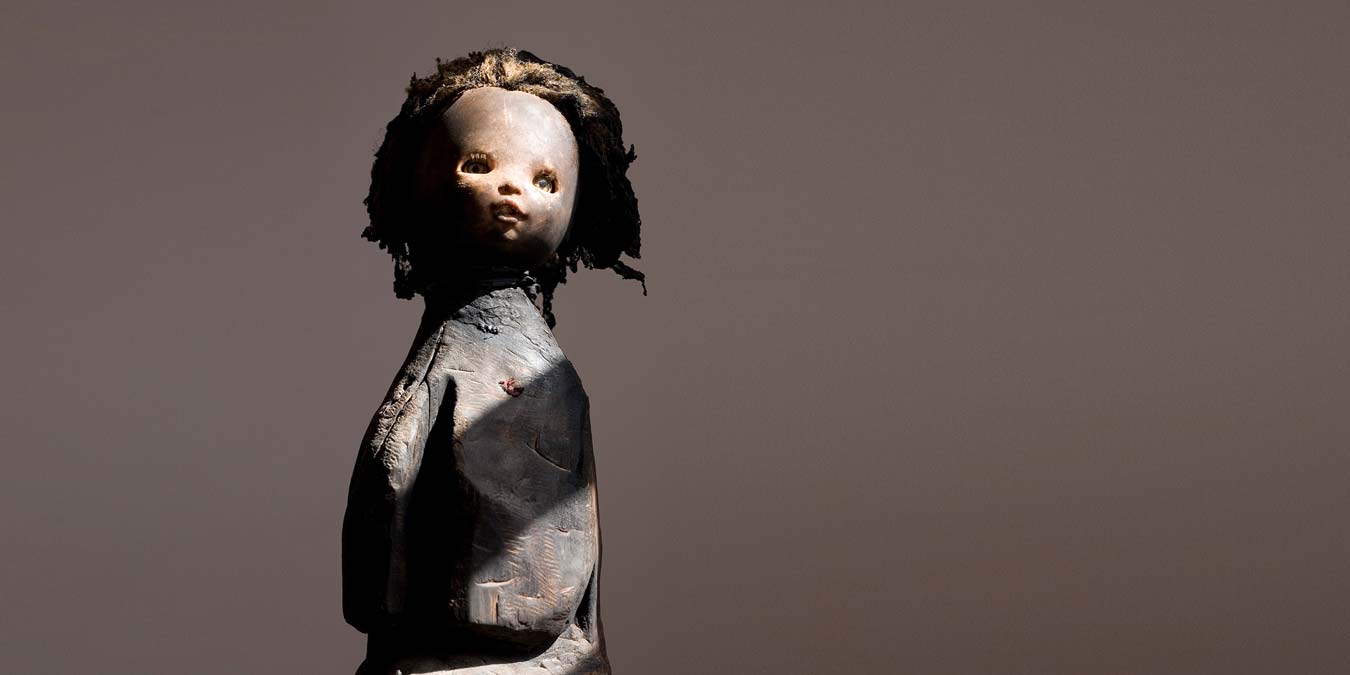GÉRARD QUENUM:
Clandestins
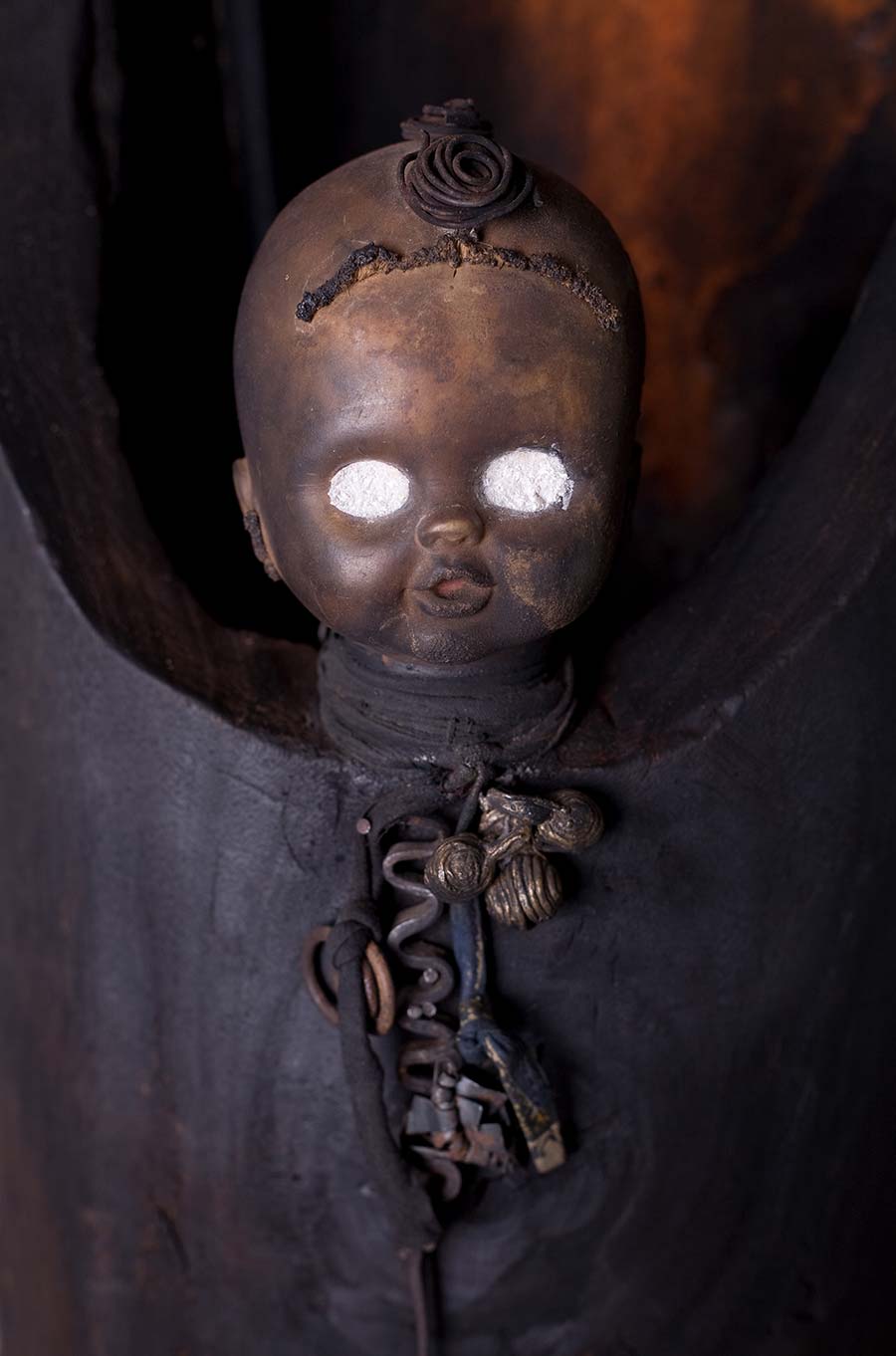
Wood, clay, metal, twine and plastic doll, 229 x 28 cm.
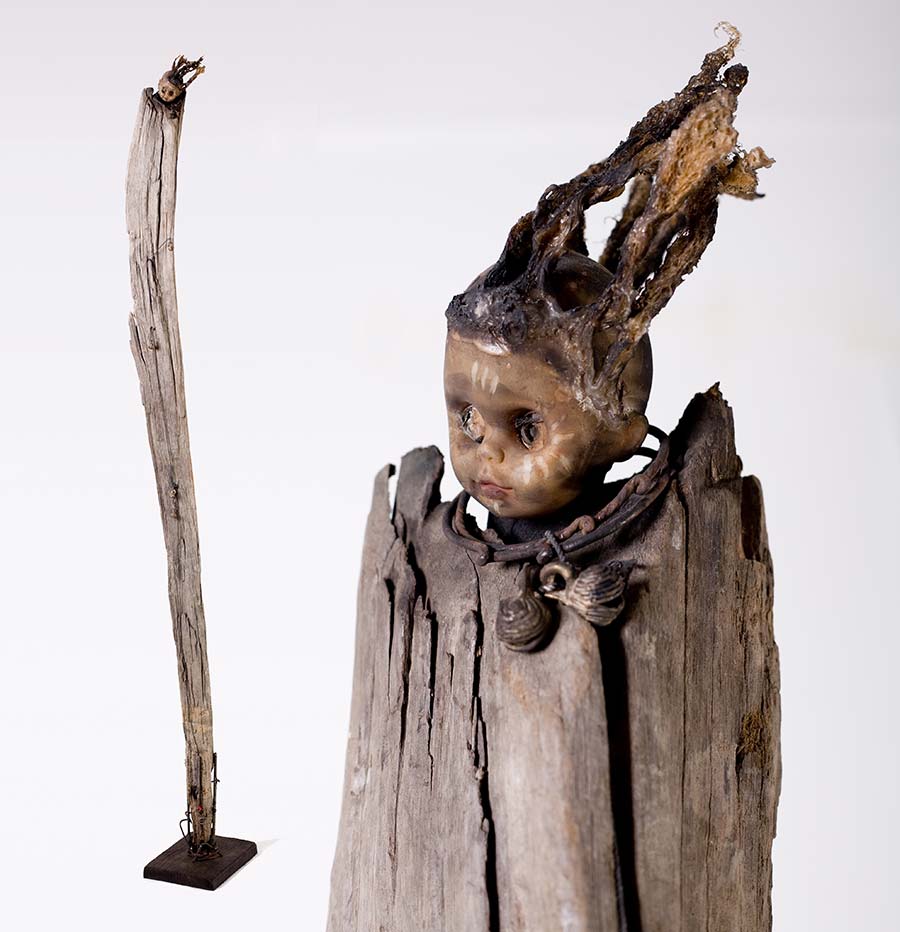
Wood, metal and plastic doll, 228 x 30 x 30 cm.
Gérard Quenum was born in the coastal town of Porto Novo, the official capital of
the Republic of Benin, in 1971. He is part of the latest generation of sophisticated
young francophone artists now breaking out of Africa and demanding wider
recognition for their art on the international stage. Benin has long been blessed
with a wealth of outstanding contemporary artists, with Cyprien Tokoudagba and
Georges Adeagbo coming early to the attention of western collectors in the late
80’s and early 90’s. Hot on their heels came ever more celebrated artists such as
Romuald Hazoumè, Dominique Kouas, the Dakpogan brothers et al. More
recently, a rising generation of “street artists” has been developing around Porto
Novo and Cotonou, This tightly-knit group, marshalled by the eccentric creativity
of Dominique Zinkpé, arranged spontaneous exhibitions of their work not in the fine
art galleries (of which Benin boasts precious few!) but outside on the city streets.
They called this succession of guerrilla exhibitions - “Boulev’art” (Art on the
Boulevard). Gerard Quenum stands out amongst these younger tyros, as the
original creator of a distinct sculptural style, and, with growing maturity, his work is
now to be found in galleries on the grand Boulevards of Paris as well as the finer
streets of London.
Like that of many contemporary African artists, Quenum’s work is composed of
recycled objects whose diverse histories contribute much to the overall
significance of the pieces themselves. But what gives his art its unique twist is his
signature use of discarded dolls added to the mix of objets trouvés – that elevates
the pieces into witty and whimsical ‘portraits’ of individuals or types observed in his
local environment. These ‘portraits’ serve as a lens through which we see
(or imagine we see) Africa itself. It is important to understand the pre-existent story
with which these dolls – none of which are indigenous African dolls – are invested.
The dolls are the remains of overseas aid parcels sent to Africa by well-meaning
organisations that imagine that the discarded toys of first-world children are
something that might aid an African child’s development. With his models secured he begins the process of transformation
that most commonly begins with a blow-torch to blacken the white skin and singe
the hair into a better approximation of a frizzy “Afro” hair-style than was ever
possessed by the original. Before they take their place upon the stages he devises,
his actors have at least been ‘Africanised’. Now all that remains for Quenum is the
weaving of a story around each doll to complete their transformation into players
that strut their parts upon his innovative stages. The invention lies in the subtle
complexities of the tale as re-told. In the compelling “African Barbie” we are asked
to reconsider the elegant world of white women and girls re-modelled and reinterpreted
under a new African light.



